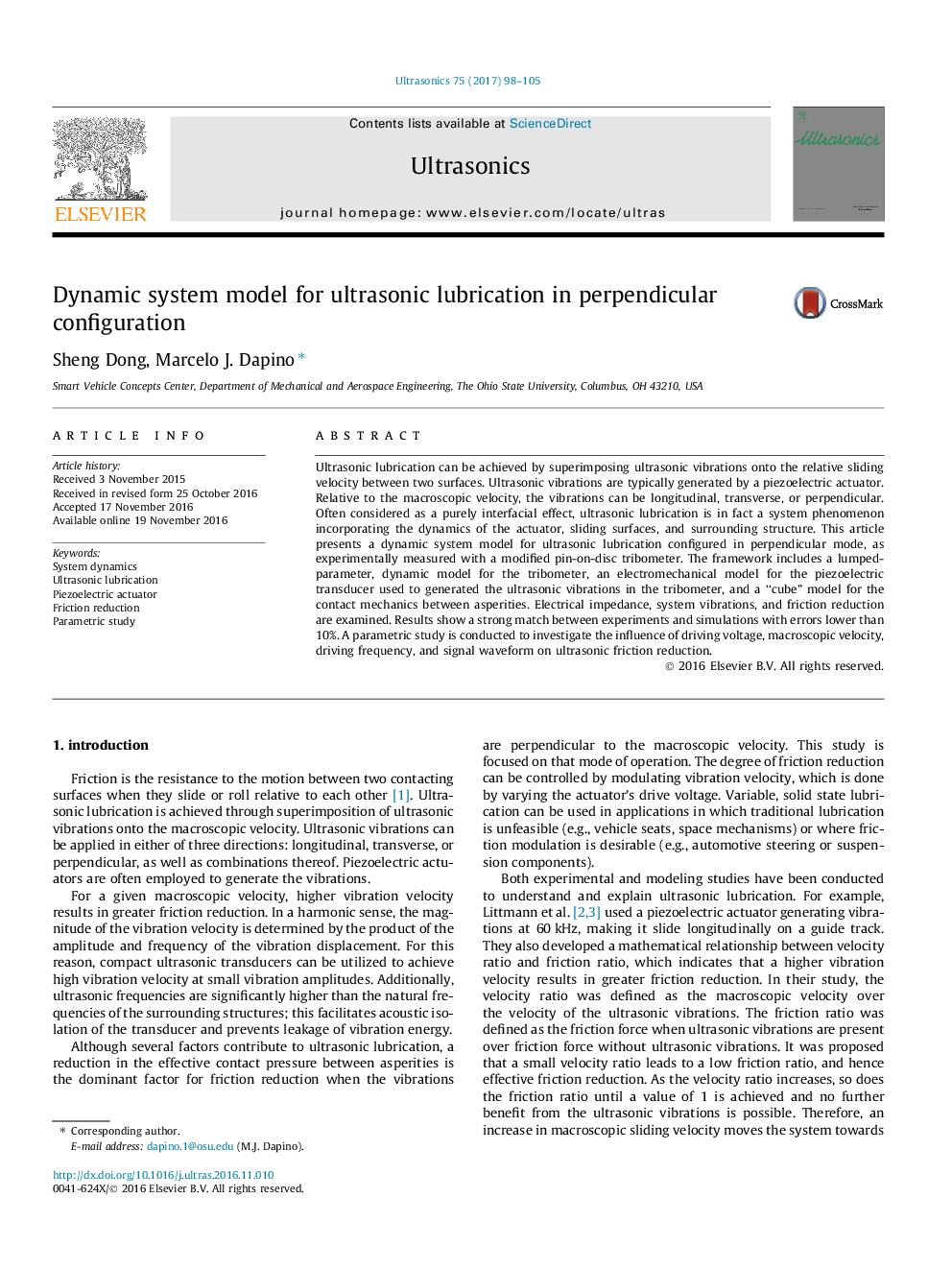| Article ID | Journal | Published Year | Pages | File Type |
|---|---|---|---|---|
| 5485490 | Ultrasonics | 2017 | 8 Pages |
Abstract
Ultrasonic lubrication can be achieved by superimposing ultrasonic vibrations onto the relative sliding velocity between two surfaces. Ultrasonic vibrations are typically generated by a piezoelectric actuator. Relative to the macroscopic velocity, the vibrations can be longitudinal, transverse, or perpendicular. Often considered as a purely interfacial effect, ultrasonic lubrication is in fact a system phenomenon incorporating the dynamics of the actuator, sliding surfaces, and surrounding structure. This article presents a dynamic system model for ultrasonic lubrication configured in perpendicular mode, as experimentally measured with a modified pin-on-disc tribometer. The framework includes a lumped-parameter, dynamic model for the tribometer, an electromechanical model for the piezoelectric transducer used to generated the ultrasonic vibrations in the tribometer, and a “cube” model for the contact mechanics between asperities. Electrical impedance, system vibrations, and friction reduction are examined. Results show a strong match between experiments and simulations with errors lower than 10%. A parametric study is conducted to investigate the influence of driving voltage, macroscopic velocity, driving frequency, and signal waveform on ultrasonic friction reduction.
Related Topics
Physical Sciences and Engineering
Physics and Astronomy
Acoustics and Ultrasonics
Authors
Sheng Dong, Marcelo J. Dapino,
